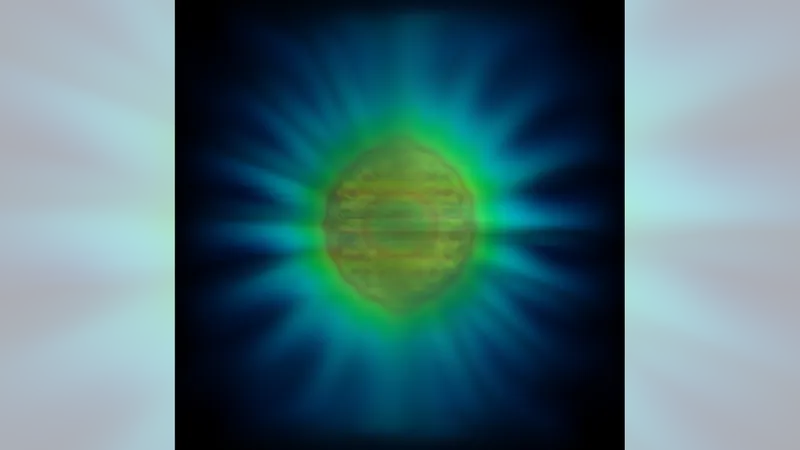
Groundbreaking Discovery: Scientists Capture the First Image of a Photon – Here’s What It Means for the Future!
2024-11-29
Author: Ming
In a stunning breakthrough, researchers from the University of Birmingham have successfully captured the first-ever image of a photon, the smallest particle of light. This extraordinary achievement, documented in a recent article published in Physical Review Letters on November 14, showcases a photon taking on a unique lemon-shaped form emitted from a nanoparticle’s surface. This revolutionary finding could pave the way for astounding advancements in fields such as quantum computing, solar energy technology, and artificial photosynthesis.
For over a century, physicists have established that light behaves as both a wave and a particle, yet our understanding of its quantum nature has lagged behind. The mechanisms through which photons are created, emitted, and how they evolve through space and time remain shrouded in mystery. “Our goal is to grasp these complex processes to harness the quantum behavior of light,” says Ben Yuen, the study's primary author and a research fellow at the University of Birmingham.
The intricate relationship between photons and their interaction with matter means that recognizing their properties involves an almost infinite range of possibilities. “You can think of a photon as a fundamental excitation of an electromagnetic field,” Yuen explains. This idea introduces an endless array of configurations, complicating our approach to studying light.
Undeterred by this complexity, Yuen and co-author Angela Demetriadou, a theoretical nanophotonics professor, devised an innovative mathematical approach. By cleverly introducing imaginary numbers—values derived from the square root of -1—they facilitated a breakthrough in simplifying the equations, allowing them to manage what would otherwise be an overwhelming task. “We transformed the continuum of frequencies into a discrete set of complex frequencies, making the equations solvable on a computer,” Yuen clarifies.
Using these new calculations, the team modeled the behavior of the photon as it was emitted from a nanoparticle and its subsequent propagation. The result? The first documented image of a photon appears distinctly shaped, demonstrating how it can be influenced by its environment.
While this image represents just one type of photon generated under specific conditions, Yuen emphasizes that 'each environment alters the photon's shape significantly.' This insight highlights the transformative potential of nanophotonics: shaping the surrounding environment could lead to innovative designs for functionality in quantum technologies.
The implications of this discovery are vast. Yuen envisions new research avenues opening up for scientists across various disciplines, from optoelectronic devices and photochemistry to advancements in biosensors and quantum communications. “Fundamental theories like these unlock exciting possibilities for future applications that we have yet to even imagine,” he concludes.
As the understanding of light and its quantum nature evolves, we inch closer to unprecedented technological advancements that could revolutionize how we harness energy and interact with the quantum realm. The future is bright, and this pioneering achievement marks just the beginning of what lies ahead!

 Brasil (PT)
Brasil (PT)
 Canada (EN)
Canada (EN)
 Chile (ES)
Chile (ES)
 España (ES)
España (ES)
 France (FR)
France (FR)
 Hong Kong (EN)
Hong Kong (EN)
 Italia (IT)
Italia (IT)
 日本 (JA)
日本 (JA)
 Magyarország (HU)
Magyarország (HU)
 Norge (NO)
Norge (NO)
 Polska (PL)
Polska (PL)
 Schweiz (DE)
Schweiz (DE)
 Singapore (EN)
Singapore (EN)
 Sverige (SV)
Sverige (SV)
 Suomi (FI)
Suomi (FI)
 Türkiye (TR)
Türkiye (TR)